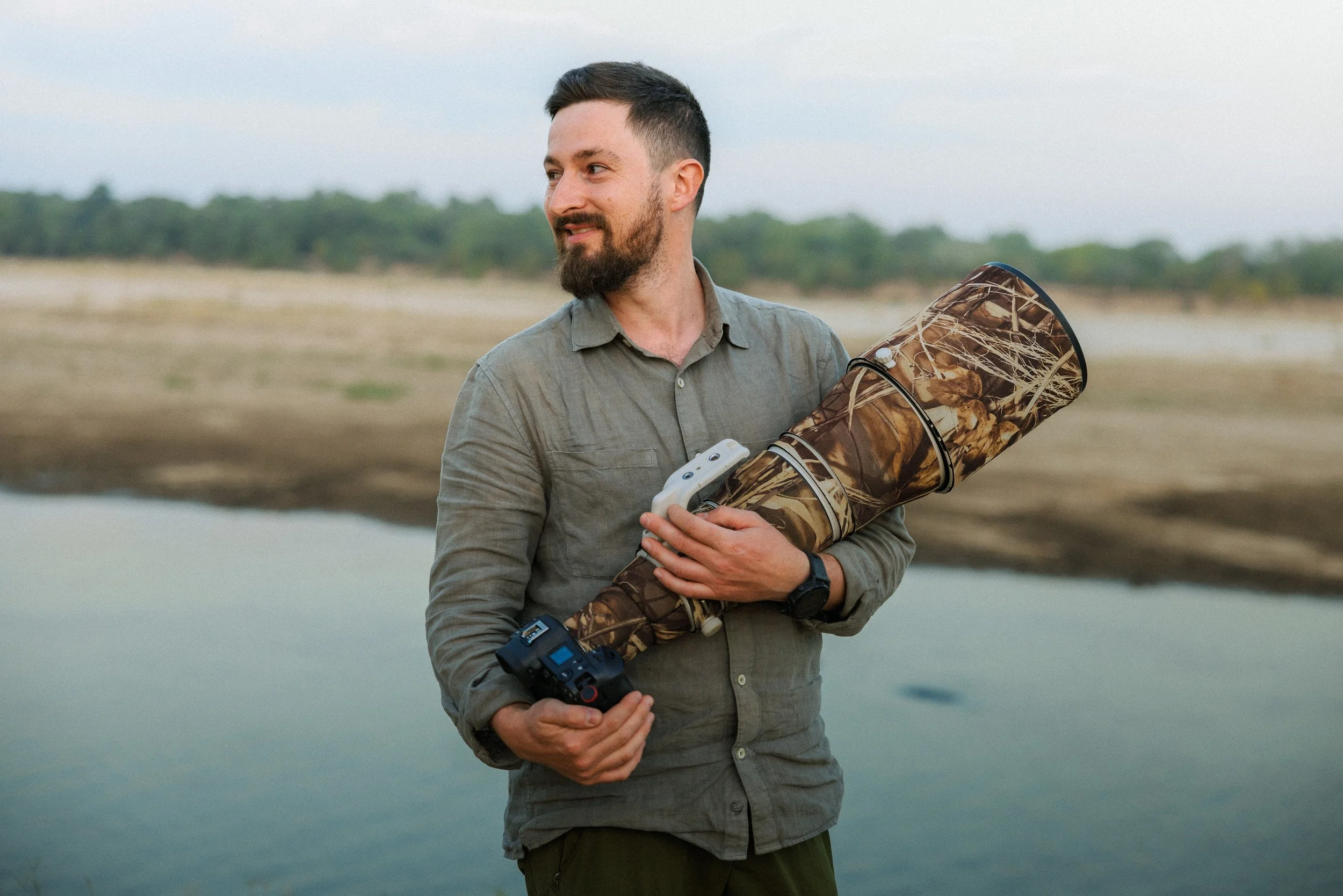My Favorite Focal Lengths for Safari & Why They Work
If there’s one question I get asked constantly—whether it’s after a workshop, under a baobab tree, or in my inbox late at night—it’s this: What’s the best lens to bring on safari? And honestly, I get it. We’ve all been there, staring at our gear shelf, panicking the night before a flight to Africa, trying to decide what makes the cut.
After years of shooting in some of the most remote corners of Africa, from the blazing heat of Namibia to the lush floodplains of Botswana, I’ve come to appreciate one truth: there is no perfect focal length. But there are focal lengths that work better than others depending on how you like to shoot, what your subject is, and how mobile you need to be.
The 100-500 RF is one of my favorite “all in one” lenses.
If I Had to Choose Just One Lens...
Let’s start here, because this is where most people are. You’re not packing a full kit. Maybe it’s your first safari. Maybe you’re traveling light. Or maybe you just want simplicity. In that case, my honest answer is: go for a superzoom.
Something like the Canon RF 100-500mm, Sony 200-600mm, or Sigma 60-600mm if you’re on a budget.
Yes, they come with compromises. They’re not as fast as primes, and sometimes the sharpness at the long end is a notch below the best glass. But you know what they offer? Versatility. And when you’re out in the field, that matters more than people think.
On one game drive in Khwai, we went from photographing a fish eagle on the top of a dead tree (full 500mm) to shooting elephants crossing the road 10 meters in front of us. Without a zoom, you’d either miss the moment or spend precious seconds changing gear. Superzooms let you stay in the moment.
I’ve guided photographers with only one body and a 100-500mm, and they came home with incredible images. Don’t feel like you need a truckload of equipment to make magic.
A zoom means sometimes zooming out - like here, shot with 100-500 at 100mm.
My Ideal Setup (And Why It Works)
Of course, if you’ve got more experience—or if you’re like me and spend months in the bush—then you might want to build a dual-body setup that covers more ground.
Right now, my go-to kit is:
Canon R5 + RF 100-300mm f/2.8
Canon R3 + EF 600mm f/4 (with 1.4x extender when needed)
This combo covers everything I need. The R5 gives me incredible resolution for wide scenes or animals in context. That 100-300mm lens is insanely sharp and fast, perfect for low light or fast-moving animals at mid-range. I use this combo when I want storytelling images—a lion framed by a sunset, a herd of buffalo disappearing into the bush.
Canon 100-300 f/2.8 is becoming on of my all-time favorite lenses.
The R3, on the other hand, is my go-to for action. It’s blazing fast and almost psychic when it comes to autofocus. With the 600mm f/4 on it, I can isolate subjects beautifully—especially birds or more skittish predators. The bokeh is creamy, the subject pops, and I don’t need to crop much thanks to the native reach.
A good example: we spotted wild dogs hunting in the early morning in Savuti. They were darting between vehicles and clumps of brush. I had no time to think. The R3 and 600mm combo let me lock on to a dog mid-sprint, even with the background chaos. Would a zoom have helped me frame better? Maybe. But I would have missed focus. Trade-offs are always there.
📷 Curious what else I carry on safari? Check this out!
What You Should Consider
When choosing your focal lengths for safari, think about:
Subject distance. If you’re heading to parks like Etosha or the Central Kalahari, animals can be far. In places like South Luangwa, you’ll often be very close.
Shooting style. Do you like intimate portraits or environmental shots?
Weight and mobility. Are you shooting handheld or from a bean bag on a vehicle?
Light conditions. A faster lens (f/2.8 or f/4) can be a game-changer in early mornings or late evenings.
Also, don’t forget to match your gear to your own physical comfort and confidence level. A 600mm on a crop sensor can feel like a telescope. It’s not always fun to handhold.
The 600 f/4 is a phenomenal lens but not necessarily the most practical to handle around.
You don’t need the most expensive setup to take great safari images. Some of my favorite shots were taken with humble gear, simply because I was in the right place at the right time and ready. Whether you're packing a single lens or two high-end bodies, the goal is the same: to tell stories through your images.
If you’re still unsure what to bring on your next trip, feel free to reach out. I love talking gear (maybe too much).














